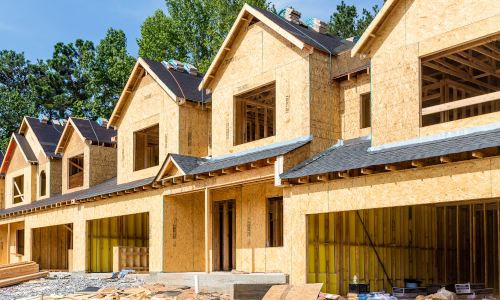While the U.S economy is still finding its footing after weathering the ongoing coronavirus pandemic, there is still plenty of good news for integrators on the housing front.
In fact, according to the National Association of Realtors (NAR), total existing-home sales, including single-family homes, townhomes, condominiums and co-ops, jumped 20.7% from May to an annual rate of 4.72 million in June. While the total number of sales dropped a bit compared to 2019, economists are still largely optimistic.
“The sales recovery is strong, as buyers were eager to purchase homes and properties that they had been eyeing during the shutdown,” says Lawrence Yun, NAR’s chief economist. “This revitalization looks to be sustainable for many months ahead as long as mortgage rates remain low and job gains continue.”
According to Yun, significantly low inventory was an issue for the housing market even before the coronavirus pandemic, which can lead to inflated home prices overall. “Home prices rose during the lockdown and could rise even further due to heavy buyer competition and a significant shortage of supply,” adds Yun.
Even with inflated pricing affecting the market, first-time buyers are battling through higher-than-normal pricing and are responsible for 35% of sales in June, up from 34% in May 2020 and about equal to 35% in June 2019.
U.S. Department of Housing and Urban Development Offers More Reasons for Optimism
The U.S. Department of Housing and Urban Development, alongside the U.S. Census Bureau recently released data reporting sales of newly built, single-family homes rose to their highest level since the Great Recession, up 13.8% to a seasonally adjusted annual rate of 776,000 units in June, which is 6.9% higher than the June 2019 pace.
The same report suggests total housing starts increased by 17.3% in June to a seasonally adjusted annual rate of 1.19 million units, while sales of existing homes jumped 20.3% in June.
This emphasis on new construction by home-buyers has also led to an uptick in activity for builders, even if lumber prices have caused projects to become more expensive to complete on average.
“While Wall Street may have been expecting a smaller gain, anyone following the NAHB/Wells Fargo Housing Market Index would know these numbers are in line with what we are hearing from builders,” says Chuck Fowke, chairman of the National Association of Home Builders (NAHB) and a custom home builder from Tampa, Fla. “Builders are moving to ramp up production to meet growing demand.”
While the current housing inventory shortage has some realtors worried, builders are using the opportunity to expand into growing markets like suburban and rural areas, which may present more opportunities for savvy integrators.
“Along with rising builder sentiment, we are seeing increasing consumer demand in the suburbs, exurbs and rural areas,” says NAHB chief economist Robert Dietz. “At the same time, builders are dealing with supply-side concerns such as rising material costs, particularly lumber, which surpassed its 2018 price peak this week. Nonetheless, low inventory levels point to construction gains ahead.”
Integrators might want to reach out to local construction companies and try and develop a working relationship that is mutually beneficial, as there’s currently a boom in construction across almost the entire country.
According to the NAHB, on a regional and year-to-date basis (January through June of 2020 compared to that same timeframe a year ago), combined single-family and multifamily starts are 2.2% higher in the Midwest, 0.2% higher in the South, and 2.9% higher in the West. The only region to see a dip in housing starts is the Northeast, which reported a 5.4% loss in starts.







